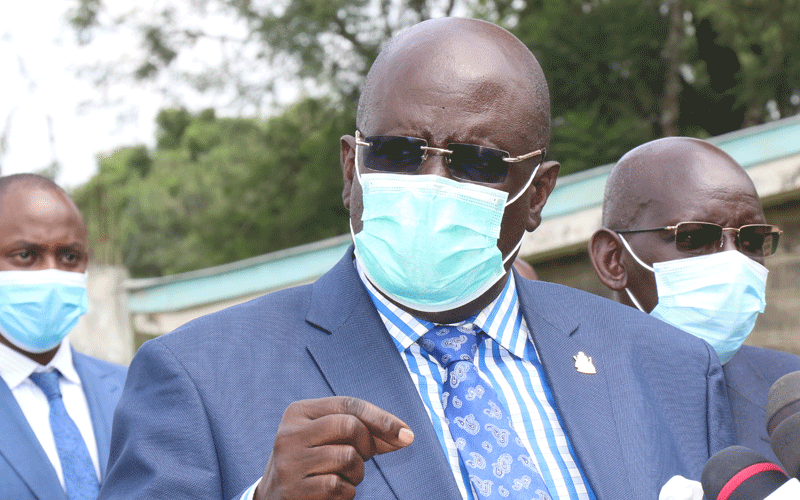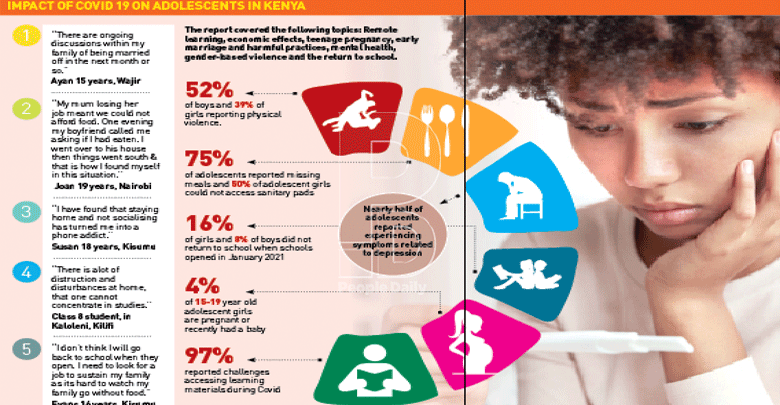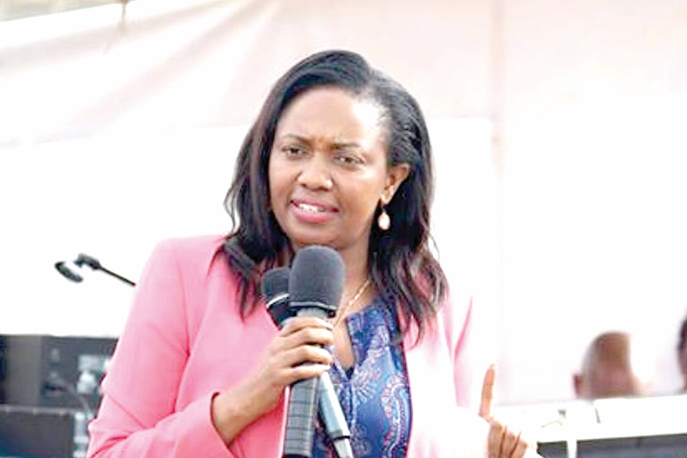Closure of schools could widen gender disparity in class

Calvince Orwa
The recent closure of schools for the second time in the wake of the third wave of the Coronavirus pandemic should prompt us to think deeply about the role of schools in the life of a child.
Covid has made us narrow down our focus on schools as just one more social gathering that needed to be dismantled to prevent the spread of the virus.
However, in doing so, the Ministry of Education failed to consider alternatives that would still serve the function of schools while addressing the pandemic.
Schools offer interconnected formal and informal services to adolescent learners.
The services focus not only on academic achievement but on social, emotional, psychological and physical well-being.
By providing physical protection and oversight, daily routines and stability as well as services for health, nutrition, sanitation and other specialised needs, schools sustain and safeguard adolescent learners.
With the recent closure of schools, adolescent girls have lost an important space that offered them stability, even as the environment around them grew ever more uncertain.
The Covid economic shocks have had devastating consequences by compounding the poverty and food insecurity many families were facing, including those in context enduring pre-existing challenges.
Mental health of the adolescents has deteriorated as they have been confined to their homes and a significant rise in sexual gender-based violence and other threats that specifically target young people.
Drawing from experience on previous infectious disease outbreaks and the current pandemic, the closures could threaten the achievement of Sustainable Development Goal 4 and the commitment of the African Union’s Agenda 2063 on elimination of gender disparities at all levels, including in education.
Gender inequity in education is a challenge the world over. School closure has removed social structures that would normally prevent high teenage pregnancy, early marriages and Female Genital Mutilation cases, phenomena that often lead to school dropout thus increasing gender disparities in education.
Evidence suggests the online learning approach adopted by many learning institutions, including colleges and universities to reduce the impact of school closures, might increase gender gaps in education.
A Plan International study on online learning during the first wave of Covid crisis in Kenya, found that only 15 per cent of surveyed girls mentioned participating in home study, compared to 40 per cent of boys.
Maybe girls have less access to technology than boys. It could also indicate girls were unable to participate in online learning due to taking on domestic chores, family care and income-generating activities to support their family.
Beyond girls falling behind in education and experiencing higher dropout rates, school closures can lead to negative effects that go beyond the direct loss of education.
Being out of school significantly reduces girls’ social network, their interaction and support from peers and staff and access to sexual and reproductive healthcare.
As a result, girls become more vulnerable to sexual violence and exploitation, FGM, forced marriage and early pregnancies.
In light of these inevitable consequences of school closures due to the pandemic, the government needs to prioritise the identification of the most marginalised adolescent girls in each context, then address the systemic barriers that prevent their engagement with education and access to protective services.
The ministry should avail more equitable remote learning by strengthening education systems, reviewing existing materials and media and developing new materials that are appropriate, learner-centred and useful for at-home learning.
Cabinet Secretary George Magoha should also ensure scholastic materials and distance learning modalities feature inclusive options for adolescent girls with a variety of disabilities.
He should also address a predictable financing alternative for education and adolescent girl’s protection.
Instead of simply sitting out the pandemic, the ministry should prepare for possible future school closures.
And as the pandemic becomes a semi-permanent fixture in at least the near future, we will continue to see increased child and adolescent protection risks and harms experienced by adolescent girls.
Simply sitting and waiting to resume working when things get back to normal will only hurt the girl child and entrench existing inequalities. – The writer is a youth advocate at the Network for Adolescent and Youth of Africa













